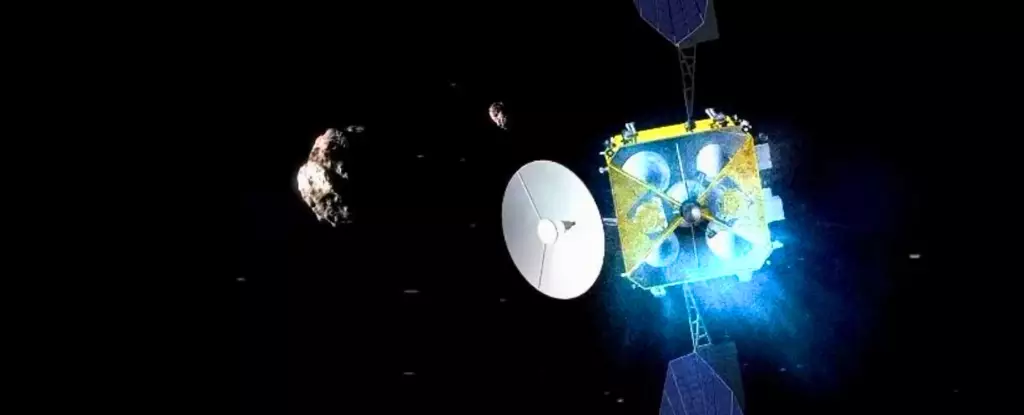This week marked a significant milestone in China’s pursuit of interstellar knowledge as the nation launched its inaugural mission to collect samples from an asteroid. Utilizing its Long March-3B rocket, the Tianwen-2 probe was released from the Xichang launch site early in the morning, marking a bold stride in China’s ambitious space program. As reported by state news agency Xinhua, this endeavor is not just a technical project but a foundational element of what President Xi Jinping envisions as China’s “space dream.” The lofty aspirations reflect a strategic investment that has likely surpassed billions and demonstrates an unwavering commitment to becoming a pivotal player in the global space arena.
The Mission’s Groundbreaking Objectives
The Tianwen-2 probe is tasked with a highly specific aim: retrieving samples from the near-Earth asteroid 2016HO3 and conducting an extensive exploration of the comet 311P. Discovered by researchers in Hawaii in 2016, 2016HO3 is remarkable not just for its size—ranging between 40 to 100 meters—but also as a treasure trove of primordial materials. Such samples could potentially unravel the mysteries of the Solar System’s genesis, offering a glimpse into the conditions that shaped the early cosmic environment. The probing of comet 311P, which displays unusual attributes typically associated with asteroids, further enhances the scientific value of this mission. This dual approach embodies a quest for knowledge that could redefine our understanding of celestial bodies.
A Glimpse into the Future of Space Exploration
China’s ongoing endeavors extend beyond this single mission. The country’s commitment to establishing a permanent Moon base within the decade underscores a strategic trajectory aimed at long-term habitation and exploration of extraterrestrial environments. It is noteworthy that China’s advancements have positioned it as the third nation to successfully launch humans into orbit, following the United States and the Soviet Union. By syncing technological innovation with vision, China is also working towards showcasing its capabilities through remote missions to both the Moon and Mars with robotic rovers.
Encapsulating National Aspirations with Global Implications
The Tianwen-2 mission isn’t merely a showcase of China’s technological prowess; it is a powerful illustration of national ambition intertwining with global scientific endeavors. The challenges faced in such long-duration, high-risk missions are significant, yet they underscore the potential for groundbreaking discoveries. As reported by Xinhua, officials express high hopes for enhancing humanity’s cosmic knowledge. Such optimism not only serves to inspire Chinese citizens but also positions the country as a collaborative player in the international scientific community.
A New Era of Space Discoveries
As we witness the launch of Missions like Tianwen-2, the implications are profound. By investing heavily in space technology, China is setting the stage for a future teeming with discovery. The desires to enhance our understanding of the universe can transcend borders; the knowledge gleaned from asteroids and comets could serve scientific communities worldwide. As the journey of Tianwen-2 unfolds over the next decade, it serves as an emblem of a new era in space exploration—a call to humanity to collaborate, learn, and expand our cosmic horizons.


Leave a Reply